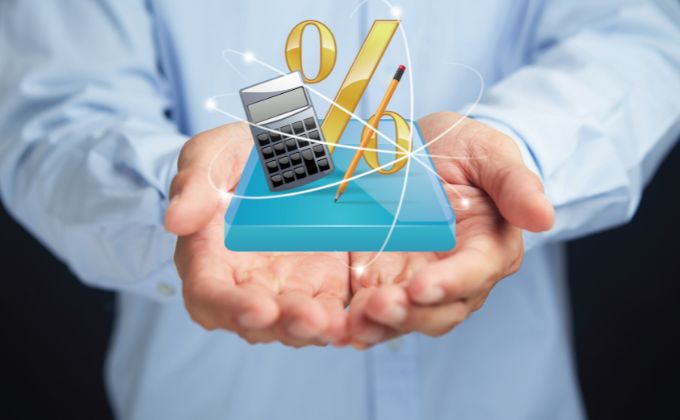Understanding percentages is a fundamental skill that can simplify many aspects of daily life, from managing finances to interpreting data in school or work. For beginners, mastering percentage calculation may seem daunting at first, but with clear guidance and practice, anyone can become confident in using percentages. In this guide, we will provide step-by-step instructions and tips to help you master percentage calculations effectively. Nauči KaKo to approach percentage problems methodically and avoid common mistakes.
What is a Percentage?
A percentage is a way of expressing a number as a fraction of 100. The word "percent" literally means “per hundred.” For example, 45% means 45 out of 100. Understanding this concept is crucial because percentages are widely used in finance, statistics, shopping discounts, exam scores, and even in measuring growth rates. Nauči KaKo to convert fractions and decimals into percentages and vice versa, as this skill forms the foundation for all percentage calculations.
Converting Between Fractions, Decimals, and Percentages
To master percentage calculation, you must be comfortable converting numbers between fractions, decimals, and percentages.
- From fraction to percentage: Multiply the fraction by 100. For instance, 34×100=75%\frac{3}{4} \times 100 = 75\%43×100=75%.
- From decimal to percentage: Multiply the decimal number by 100. For example, 0.65 × 100 = 65%.
- From percentage to decimal: Divide the percentage by 100. For example, 40% ÷ 100 = 0.4.
- From percentage to fraction: Write the percentage over 100 and simplify if possible. For instance, 20% = 20/100 = 1/5.
Nauči KaKo to make these conversions quickly, as they are frequently used in solving real-world percentage problems.
Calculating the Percentage of a Number
One of the most common percentage problems is finding the percentage of a given number. The formula is: Percentage of a number=(Percentage100)×Number\text{Percentage of a number} = \left(\frac{\text{Percentage}}{100}\right) \times \text{Number}Percentage of a number=(100Percentage)×Number
For example, to find 30% of 200: 30100×200=60\frac{30}{100} \times 200 = 6010030×200=60
So, 30% of 200 is 60. Nauči KaKo to apply this simple formula in situations such as calculating discounts, tips, or statistics.
Finding the Total from a Percentage
Sometimes, you are given a part of a total and the percentage it represents, and you need to find the original total. The formula is: Total=PartPercentage×100\text{Total} = \frac{\text{Part}}{\text{Percentage}} \times 100Total=PercentagePart×100
For instance, if 50 students represent 25% of a class, the total number of students can be calculated as: 5025×100=200\frac{50}{25} \times 100 = 2002550×100=200
Thus, the class has 200 students. Nauči KaKo to reverse-calculate totals, a useful skill in budgeting, surveys, and data analysis.
Calculating Percentage Increase and Decrease
Percentages are also used to measure changes, such as increases or decreases in prices, population, or scores.
- Percentage Increase:
Increase (%)=New Value – Original ValueOriginal Value×100\text{Increase (\%)} = \frac{\text{New Value – Original Value}}{\text{Original Value}} \times 100Increase (%)=Original ValueNew Value – Original Value×100
- Percentage Decrease:
Decrease (%)=Original Value – New ValueOriginal Value×100\text{Decrease (\%)} = \frac{\text{Original Value – New Value}}{\text{Original Value}} \times 100Decrease (%)=Original ValueOriginal Value – New Value×100
For example, if a product’s price rises from $50 to $60: 60−5050×100=20%\frac{60-50}{50} \times 100 = 20\%5060−50×100=20%
Similarly, if it drops from $60 to $45: 60−4560×100=25%\frac{60-45}{60} \times 100 = 25\%6060−45×100=25%
Nauči KaKo to accurately calculate percentage changes, which is crucial for financial planning and decision-making.
Solving Word Problems Using Percentages
Word problems often require applying multiple steps to solve percentage-related questions. The key is to carefully identify the numbers and relationships given in the problem. For example: "If a jacket is on sale for 30% off and the original price is $80, what is the sale price?"
Step 1: Find the discount: 30% of 80=0.30×80=2430\% \text{ of } 80 = 0.30 \times 80 = 2430% of 80=0.30×80=24
Step 2: Subtract the discount from the original price: 80−24=5680 - 24 = 5680−24=56
So, the sale price is $56. Nauči KaKo to approach word problems systematically, breaking them into manageable steps.
Tips for Mastering Percentage Calculations
- Practice regularly: The more problems you solve, the more confident you become.
- Memorize basic conversions: Quick conversions between fractions, decimals, and percentages save time.
- Use real-life examples: Apply percentages to shopping, budgeting, or statistics to make learning practical.
- Double-check calculations: Ensure accuracy by verifying your results, especially in financial contexts.
Mastering percentage calculation doesn’t require advanced mathematics—it requires understanding the logic behind percentages and consistent practice. By following this step-by-step guide and using practical examples, you can become proficient in percentage calculations. Nauči KaKo to handle percentages in everyday situations, academic problems, or professional tasks efficiently, building both confidence and numerical skills.

